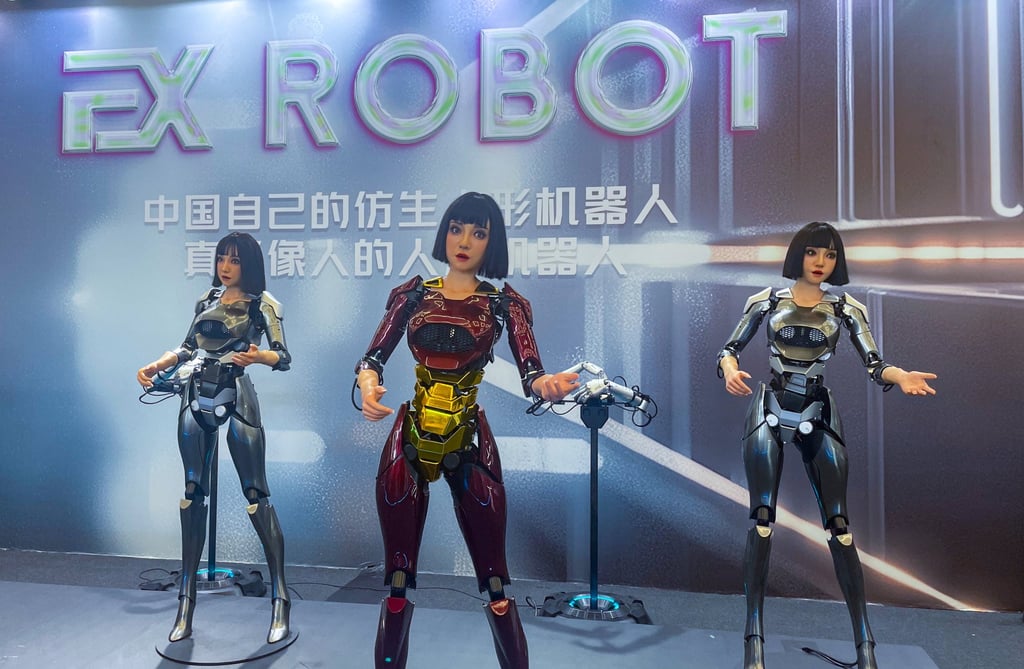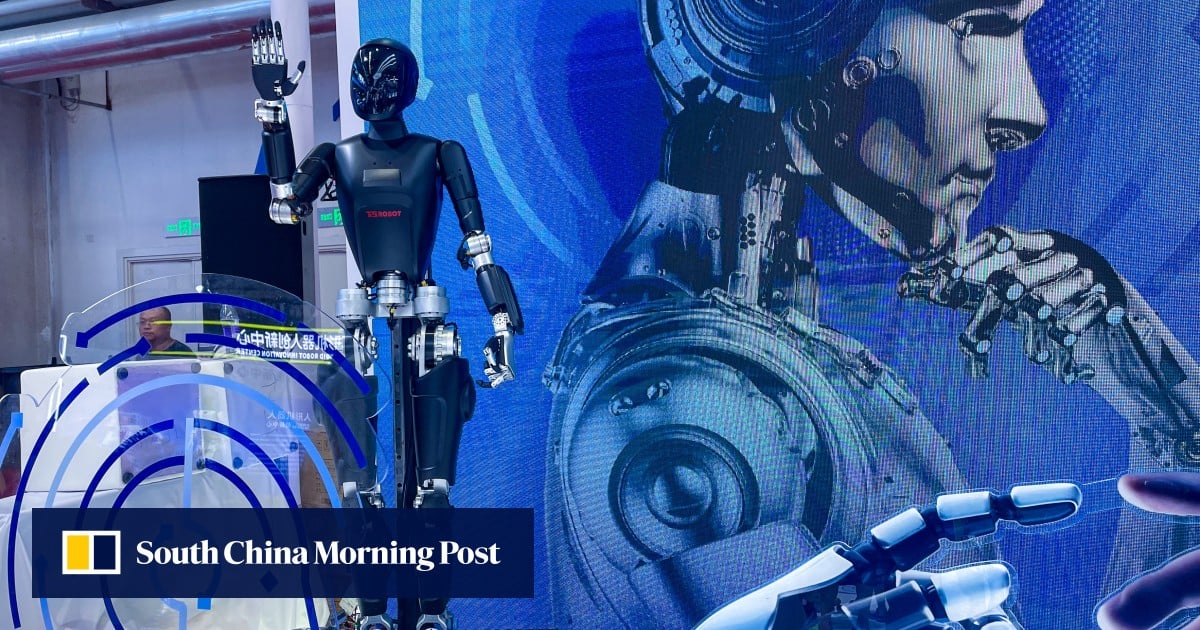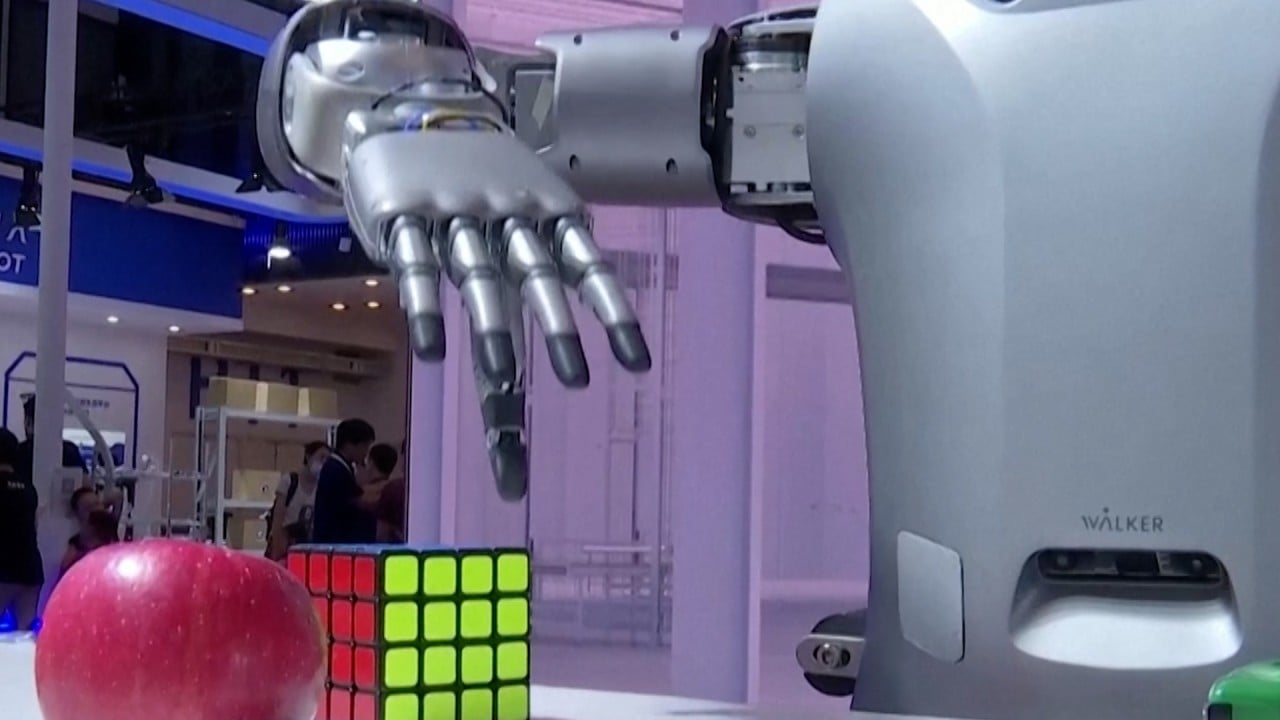Yao’s centre unveiled a new model at the conference, which even at prices ranging from 700,000 yuan (US$98,260) to 800,000 yuan has already seen some sales. Most purchasers were manufacturers, but supermarkets have also expressed interest.
“We anticipate that humanoid robots could see large-scale applications in industrial settings as early as next year or the year after. We should see some trial deployments in service scenarios across various regions as early as next year,” Yao said. “This could lead to a reduction in costs … given the pace of technological iteration, it’s likely we’ll see robots in households within five to 10 years.”
During the conference – held from August 21 to Sunday – a total of 27 models were showcased, the highest number in the event’s history. More than 30 companies involved in the manufacture of androids made an appearance.

This infusion of funds is accelerating the deployment of androids in various fields, including manufacturing, healthcare, elderly care, education, entertainment and consumer services.
According to the International Federation of Robotics, the global humanoid robot market is expected to achieve a compound annual growth rate of 71 per cent from 2021 to 2030.
By 2030, China’s share of that market could reach around 870 billion yuan (US$122.1 billion) in value, according to the China Electronics Society. Several regions have already established innovation centres, providing incentives and support to companies in the industry chain.
“We must integrate the development of robotics into policies supporting digital transformation, smart manufacturing and large-scale equipment upgrades,” Li said.
Li also said advancing robotics requires strengthening international cooperation and supporting foreign enterprises and research institutions as they invest and operate in China.
Yao said he believes the implementation of humanoid robots is likely to be realised domestically first.
However, making a lifelike robot that can talk and move is not nearly as difficult as crafting one capable of performing complex tasks with humanlike efficacy.
For many purchasers at the conference, a significant portion of orders are intended as showpiece models, more a novelty than a reliable performer of specific tasks in real-world scenarios.
Shanghai Qingbao Engine Robot sells units for 150,000 to 200,000 yuan, providing highly realistic androids to buyers who use them to draw attention at exhibition halls, unmanned retail stores, hospitals, schools, coffee shops, chain hotels and e-commerce live streaming.

“We couldn’t start by making them for elderly care -it’s a process, there are still many capabilities we can’t achieve yet. For now, we can have the robot chat with or monitor [patients], but tasks like feeding them, helping them to the bathroom, assisting with bathing, or picking them up if they fall – those are more advanced.”
But Wang said the universalisation of robots in homes is not that far away.
“We can’t predict how the technology will develop. [It] could suddenly make a breakthrough one day.”
Tangible progress could be made within two to three years, Wang added, but creating a truly reliable product might take more than 10 years.
“For example, in elderly care, it’s not just about cost – there are also issues of safety and reliability. Many challenges cannot be addressed quickly; it’s a long-term process of accumulation.”
Humanoids themselves are still pretty immature, by and large
Hu Yuhang, founder of Aheadform, a start-up specialising in making lifelike robot heads with expressive facial features, said while people may think we are far from the androids of sci-fi literature and cinema – barely distinguishable from humans – a more focused viewpoint is needed.
“Within 10 years, we might interact with robots and feel like they are almost human; maybe in 20 years, they could walk normally and perform some tasks just like a human. Each stage of development is different, but to create a robot that is exactly like a human is very difficult,” he said.
“I think there will be lots of progress with robots being used in the industry. And there’s a lot of attention … the technology available to make robots better is continuing to mature, and I think the industry will make progress.
“[But] humanoids themselves are still pretty immature, by and large. You can look at the demos that some are doing with car companies. I think that’s to some degree a show-off thing more than a productivity thing.”


